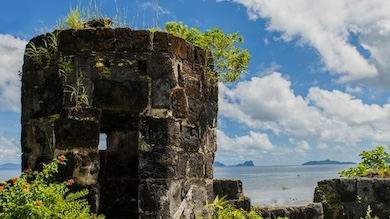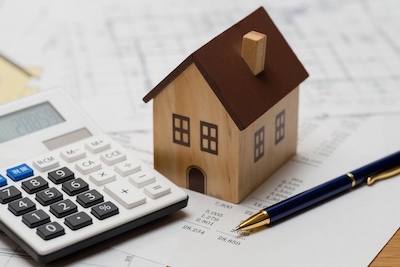










The History That Shaped the Philippines
The Philippines is a nation shaped by centuries of migration, trade, conquest, and resistance. Long before foreign powers arrived, indigenous communities thrived, developing structured societies and vibrant trade networks. The arrival of Spanish, American, and Japanese influences introduced new religions, governance systems, and conflicts that reshaped Filipino identity.
Despite these changes, the Filipino spirit remains strong—defined by resilience, adaptability, and an enduring sense of pride. From early civilizations to colonial struggles and modern independence, every era has left a lasting impact. To understand the Philippines today, we must first explore the key moments that shaped its past.

Pre-Colonial Philippines
Before foreign rule, the Philippines was a thriving collection of independent communities. Societies were structured around barangays, small political units led by a Datu (chief) who governed with the support of elders:
Governance: Barangays operated independently, with laws and customs passed through oral traditions.
Trade & Economy: The islands were part of a vast trade network with China, India, and the Middle East, exchanging gold, pearls, spices, and textiles.
Culture & Beliefs: Indigenous religions revolved around animism and ancestor worship, with spiritual leaders called Babaylan playing an important role in rituals.

Spanish Colonization (1565–1898)
For over 300 years, Spain ruled the Philippines, leaving a lasting impact on its culture, religion, and governance. The Spanish introduced Catholicism, centralized political control, and new social structures that shaped the nation’s identity.
Christianity Takes Root: Catholicism became deeply embedded in Filipino society, with churches, schools, and religious festivals influencing daily life. Today, over 80% of Filipinos identify as Catholic.
Spanish Governance: The Spanish colonial system established a hierarchical society, with power concentrated in the hands of Spanish officials and the clergy. Filipinos were subjected to forced labor and tribute payments.
Struggles for Independence: Over time, dissatisfaction grew, leading to revolts and nationalist movements. The 1896 Philippine Revolution, led by figures like José Rizal and Andrés Bonifacio, marked the beginning of the country’s fight for freedom.

Rebuilding After World War II
The devastation left by World War II forced the Philippines into a long and difficult recovery. Manila, once a thriving city, was left in ruins, and the economy was in crisis. The nation had to rebuild its infrastructure, government, and economy while reclaiming its independence on the global stage.
Post-War Reconstruction: The United States provided financial aid through the Bell Trade Act of 1946, helping rebuild roads, bridges, and public services. However, economic policies heavily favored American interests, limiting local industries.
Political Landscape: The newly independent Philippine government faced instability, with corruption and internal conflicts slowing progress. Despite this, democratic institutions continued to develop, shaping the country’s political future.
Economic Struggles and Growth: Agriculture and manufacturing sectors gradually recovered, but rural poverty and social inequality remained significant challenges. The 1950s and 1960s saw a push for industrialization, setting the foundation for economic modernization.

The Marcos Era & Martial Law
Ferdinand Marcos rose to power in 1965, initially promising progress and stability. However, his presidency became synonymous with corruption, authoritarian rule, and economic decline, especially after declaring Martial Law in 1972.
Martial Law (1972–1981): Marcos justified military rule as a response to growing unrest and communist threats. Civil liberties were suspended, political opponents were arrested, and media censorship was enforced.
Economic Boom & Crisis: Infrastructure projects and foreign investments created an illusion of progress, but widespread corruption and government debt led to economic turmoil. Wealth disparity grew, and many Filipinos suffered under worsening poverty.
Growing Opposition: Human rights abuses, suppression of dissent, and economic struggles fueled public discontent. The assassination of opposition leader Benigno "Ninoy" Aquino Jr. in 1983 became a turning point, igniting nationwide protests.

People Power Revolution & Democratic Transition
By the mid-1980s, growing unrest and economic struggles led to a nationwide movement demanding change. The assassination of Benigno "Ninoy" Aquino Jr. in 1983 intensified opposition to Marcos, culminating in the historic People Power Revolution of 1986.
The 1986 Revolution: Millions of Filipinos took to the streets in a peaceful uprising, supported by religious leaders, civilians, and defecting military officials. Marcos fled into exile, marking the end of his two-decade rule.
Return to Democracy: Corazon Aquino, Ninoy’s widow, became the country’s first female president. She restored democratic institutions, repealed oppressive laws, and initiated economic reforms to rebuild the nation.
Challenges & Political Shifts: The transition was not without difficulties—coup attempts, economic struggles, and natural disasters tested the new government. Despite setbacks, the return to democracy paved the way for a more open political system.

Modern Philippines
Today, the Philippines is a dynamic nation balancing economic growth, social challenges, and cultural preservation. As one of Southeast Asia’s fastest-growing economies, it continues to evolve while staying rooted in its traditions.
Economic Growth & Globalization: The country has seen rapid development in business process outsourcing (BPO), remittances from overseas Filipino workers (OFWs), and tourism. Urban centers like Metro Manila and Cebu thrive as economic hubs.
Political Landscape: Governance remains a key issue, with efforts to combat corruption, improve infrastructure, and address social inequalities. Political shifts and reforms shape the nation’s future direction.
Culture & Identity: Despite modernization, Filipinos maintain a strong sense of heritage. Traditional festivals, family values, and religious devotion continue to define daily life, blending old customs with contemporary influences.

Philippines Today & Beyond
The Philippines stands at a crossroads, navigating the challenges of the modern world while striving for a brighter future. With a young population, technological advancements, and a resilient spirit, the nation looks ahead with ambition.
Challenges & Opportunities: Issues such as poverty, climate change, and political stability remain critical, but advancements in technology, education, and entrepreneurship offer pathways to progress.
Regional & Global Role: As a key player in ASEAN, the Philippines continues to strengthen its diplomatic ties, trade partnerships, and international presence in areas like digital innovation and sustainable development.
The Future of Filipino Identity: While modernization reshapes lifestyles, Filipinos remain deeply connected to their roots. The enduring values of resilience, hospitality, and faith will continue to define the nation’s identity in the years to come.

Understanding the Past to Navigate the Present
The story of the Philippines is one of survival, strength, and identity. From early indigenous societies to the impact of colonization, war, dictatorship, and democracy — every chapter has shaped the resilient Filipino spirit seen today. This history is not just about events; it explains the values, systems, and culture you experience when living or visiting here.
By learning about the country’s past, you gain valuable context that helps make sense of modern Filipino society — its deep faith, community ties, and ongoing struggles for justice and progress. Whether you're exploring, investing, or retiring in the Philippines, this historical backdrop adds meaning to every step.

What to Explore Next
Now that you have a deeper understanding of Filipino society, it’s a good time to look at living life in the Philippines as a visitor, expat, or retiree. Our Living in Focus section covers what life in the Philippines is really like — from setting up essentials to navigating everyday systems.
You’ll find key guides on healthcare, banking, visas, and the real cost of living — everything you need to plan your next step, whether you’re already here or planning your move.

See what expats really spend in the Philippines — with real figures on housing, food, and everyday costs.

Discover practical visa routes for expats, retirees, and long-stay visitors planning life in the Philippines.
Back to Top
